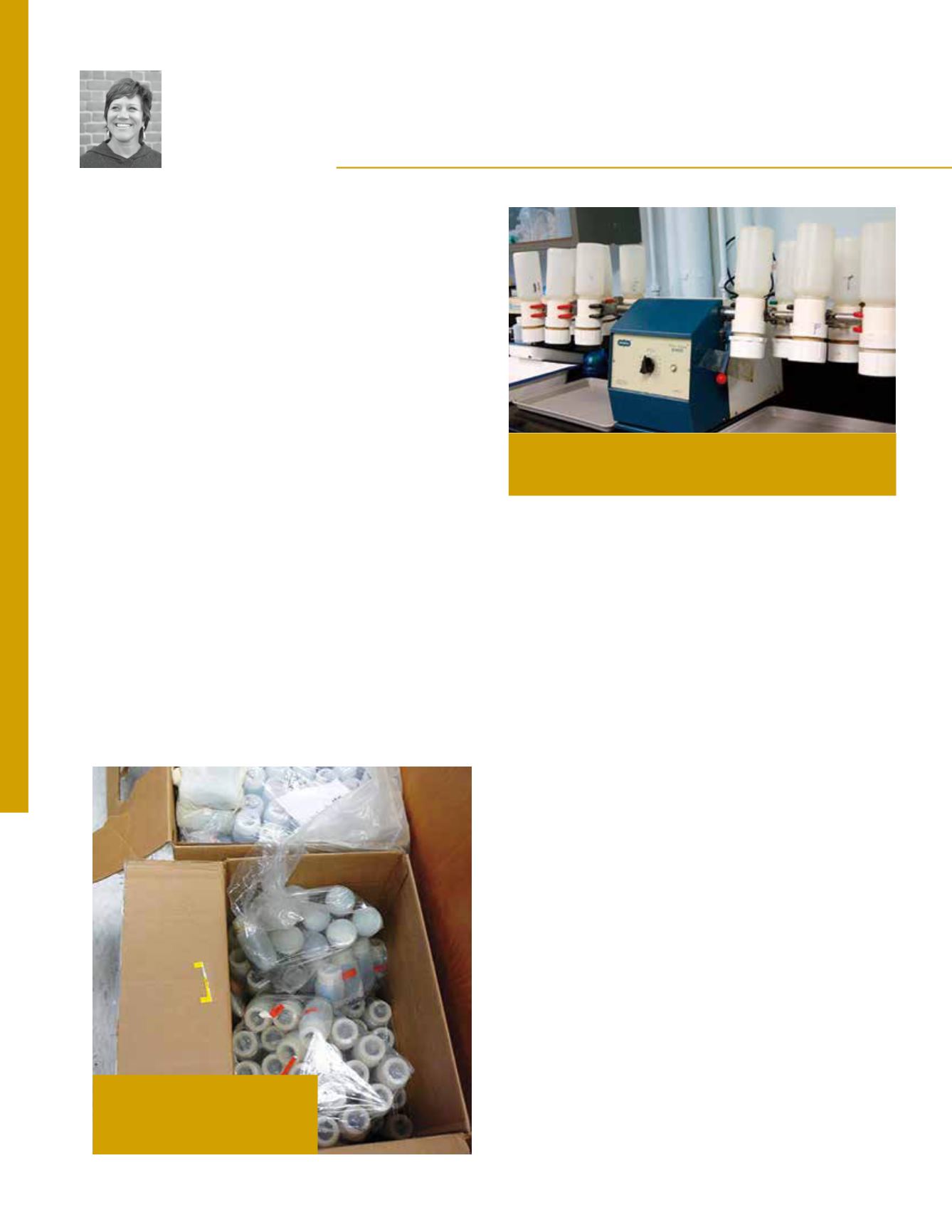
THE BEE BOX
30
Almond Facts
JANUARY | FEBRUARY 2017
The Bee Box
KAREN RENNICH
Before the Flood
More than a thousand beekeepers, research
scientists, almond growers and industry leaders
are gathered in Galveston, Texas for the North
American Beekeeping conference. There may
be a few interested locals here too, wondering
who all these folks are in full bee regalia and
driving large pickup trucks. It is an exciting
but challenging time to be working in the field
of honey bees. This conference enables even the
most novice beekeeper to rub shoulders with
large commercial operations and world renowned
honey bee researchers. It is a time of joy to catch
up with folks you haven’t seen in a year but also a
time of anxiety as beekeepers begin to move into
almonds and hope that the weather cooperates
and that the bees stay healthy.
We have focused on the efforts of the technical transfer
teams in previous articles but as with many multi-faceted
organizations, there is a crew behind the scenes helping
make everything run on schedule and stay organized.
I’d like to highlight the efforts of our Bee Informed
Partnership central processing lab at the University of
Maryland and how it serves more than 100 commercial
beekeepers and their operations. We have a small window
(less than a month) where our lab gets a breather, cleans,
archives samples, resupplies and gets organized as we gear
up for another busy year. Once our teams start sampling
in almonds in only a few short weeks, the flood of samples
and data begins anew.
High Throughput
Our lab processes well over 10,000 samples a year just for
our five technical transfer teams alone and after doing
this for over five years, it is well-oiled machine. Sample
bottles arrive daily and after they are logged in, colony
health assessment data is entered into our database and
the samples are prepped for varroa mite load analysis and
nosema spore analysis. After analysis, data are entered
and checked several times before reports are generated
and sent to the tech teams and beekeepers.
Required samples are archived with ethanol in glass
scintillation vials and vacuum packed in our cold room for
long term storage in the event we want to go back to those
samples to evaluate them for any new threats we may see
in the future.
Not only does our lab process all the samples, we generate
all the sampling kits for the technical transfer team. With
the use of a super-saturated salt solution instead of alcohol
as the preservative liquid, we are able to recycle the sample
bottles many times. We clean and dry them thoroughly and
Samples from Technical Transfer teams
arriving at the University of Maryland
Honey Bee Lab.
Photo courtesy of the
Bee Informed Partnership Inc.
Varroa shaker set up to process. Up to 12 samples are shaken for 30 minutes
to dislodge any varroa mites. The mites are then counted and a mite load
is calculated.
Photo courtesy of the Bee Informed Partnership, Inc.


